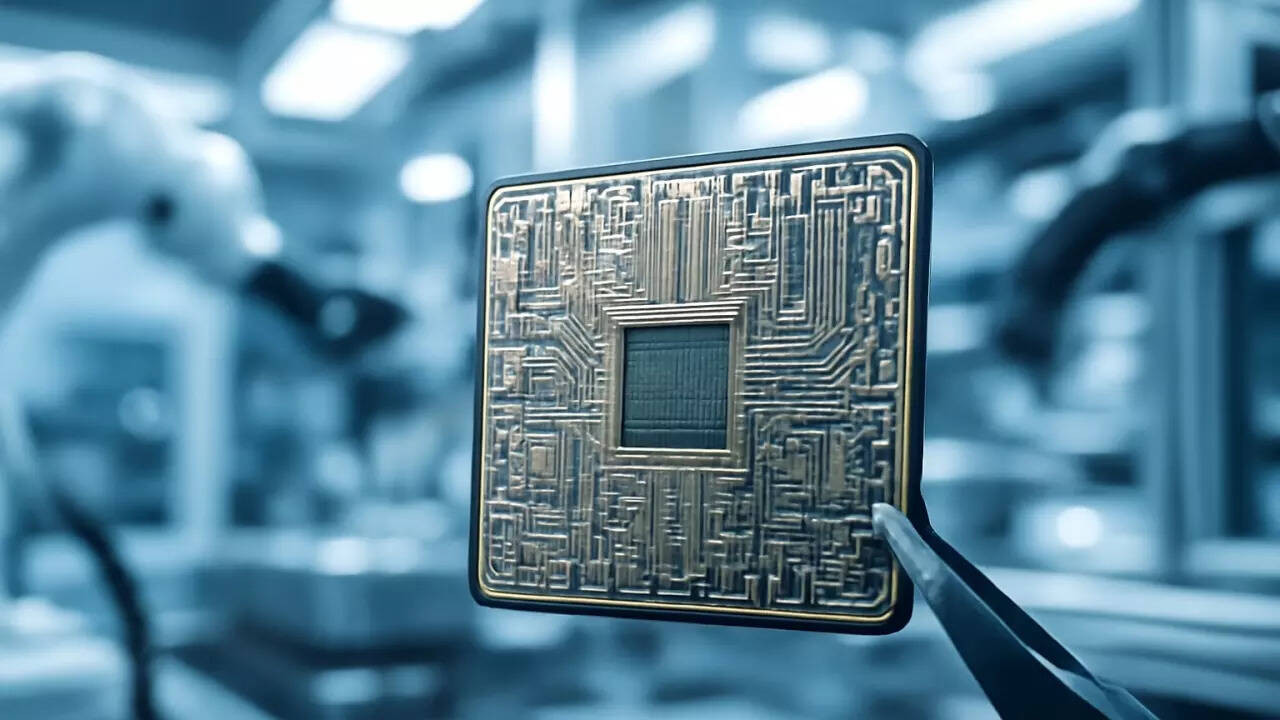The Union Cabinet has approved four new semiconductor projects under the India Semiconductor Mission, boosting the nation’s ecosystem. These projects, with an investment of Rs 4,600 crore, include India’s first commercial compound fabrication facility and an advanced glass-based substrate packaging unit.
India’s Semiconductor Dreams Take Root: Four New Projects Approved
India’s ambitions to become a global semiconductor hub are surging forward. The Union Cabinet recently greenlit four new semiconductor projects, signaling a major step in the nation’s “Make in India” initiative. This move aims to significantly bolster the country’s domestic chip manufacturing capabilities and reduce reliance on foreign suppliers. The combined investment for these projects is projected to reach approximately ₹4600 crore, a figure that underscores the government’s commitment to this crucial sector.
But what makes this announcement so significant? For years, India has relied heavily on imported semiconductors, the tiny but mighty brains powering everything from smartphones to cars and complex industrial machinery. This dependence creates vulnerabilities in supply chains and limits India’s strategic autonomy. By fostering a vibrant domestic semiconductor industry, India can not only secure its own supply but also potentially become a major exporter, strengthening its position in the global economy.
A Closer Look at the Approved Semiconductor Ventures
The specifics of each project are still unfolding, but the overall picture paints a promising landscape. These ventures span various aspects of the semiconductor ecosystem, including:
* Compound Semiconductors: These specialized chips are crucial for power electronics, radio frequency devices, and optoelectronics. Imagine more efficient electric vehicles, faster wireless communication, and advanced lighting systems – that’s the power of compound semiconductors.
* Semiconductor Assembly, Testing, Marking, and Packaging (ATMP): This vital stage in the chip manufacturing process takes the raw semiconductor wafers and transforms them into finished, usable components. Building ATMP capabilities is essential for a complete domestic supply chain.
These are not just isolated projects; they represent a concerted effort to build a holistic semiconductor ecosystem within India. By attracting both manufacturing and downstream activities like ATMP, India is aiming for self-sufficiency and global competitiveness.

Why Now? The Global Context and India’s Opportunity
The timing of this push is no coincidence. Geopolitical tensions and supply chain disruptions have highlighted the critical importance of secure access to semiconductors. Nations around the world are racing to onshore or “friend-shore” semiconductor production, and India is determined to be a player in this new world order. The government’s Production Linked Incentive (PLI) scheme, offering financial incentives to companies investing in semiconductor manufacturing in India, has been a key catalyst for attracting these investments.
Furthermore, India’s growing domestic market for electronics is creating a natural demand for locally produced semiconductors. As the country’s digital economy expands, the need for chips will only increase, providing a strong foundation for the growth of the domestic semiconductor industry. This internal demand, coupled with government support, creates a compelling investment proposition.
Beyond Manufacturing: The Need for Talent and Innovation
While attracting manufacturing investments is crucial, building a sustainable semiconductor industry requires more than just factories. India needs to invest heavily in education and training to develop a skilled workforce capable of designing, manufacturing, and maintaining these advanced technologies. Collaboration between academia and industry will be essential to ensure that the curriculum is relevant and that graduates are well-prepared for the demands of the sector. This effort requires a robust ecosystem of innovation to ensure long-term competitiveness.
India must also foster a culture of innovation and entrepreneurship within the semiconductor sector. Supporting startups and research institutions that are developing new semiconductor technologies will be crucial for staying ahead of the curve. Investment in research and development is essential to ensure that India is not just replicating existing technologies but also creating its own cutting-edge innovations. Read more about India’s tech future here.
The Road Ahead for Indian Semiconductors
The approval of these four semiconductor projects marks a significant milestone in India’s journey to becoming a global semiconductor hub. The ₹4600 crore investment is a strong signal of the government’s commitment to this sector, and the projects themselves represent a diverse range of activities within the semiconductor ecosystem. However, the real work is just beginning. India must now focus on attracting further investments, developing a skilled workforce, and fostering a culture of innovation to ensure the long-term success of its semiconductor ambitions. The promise of an “Atmanirbhar Bharat” (self-reliant India) in electronics hinges on the successful cultivation of a robust and competitive domestic semiconductor industry.







